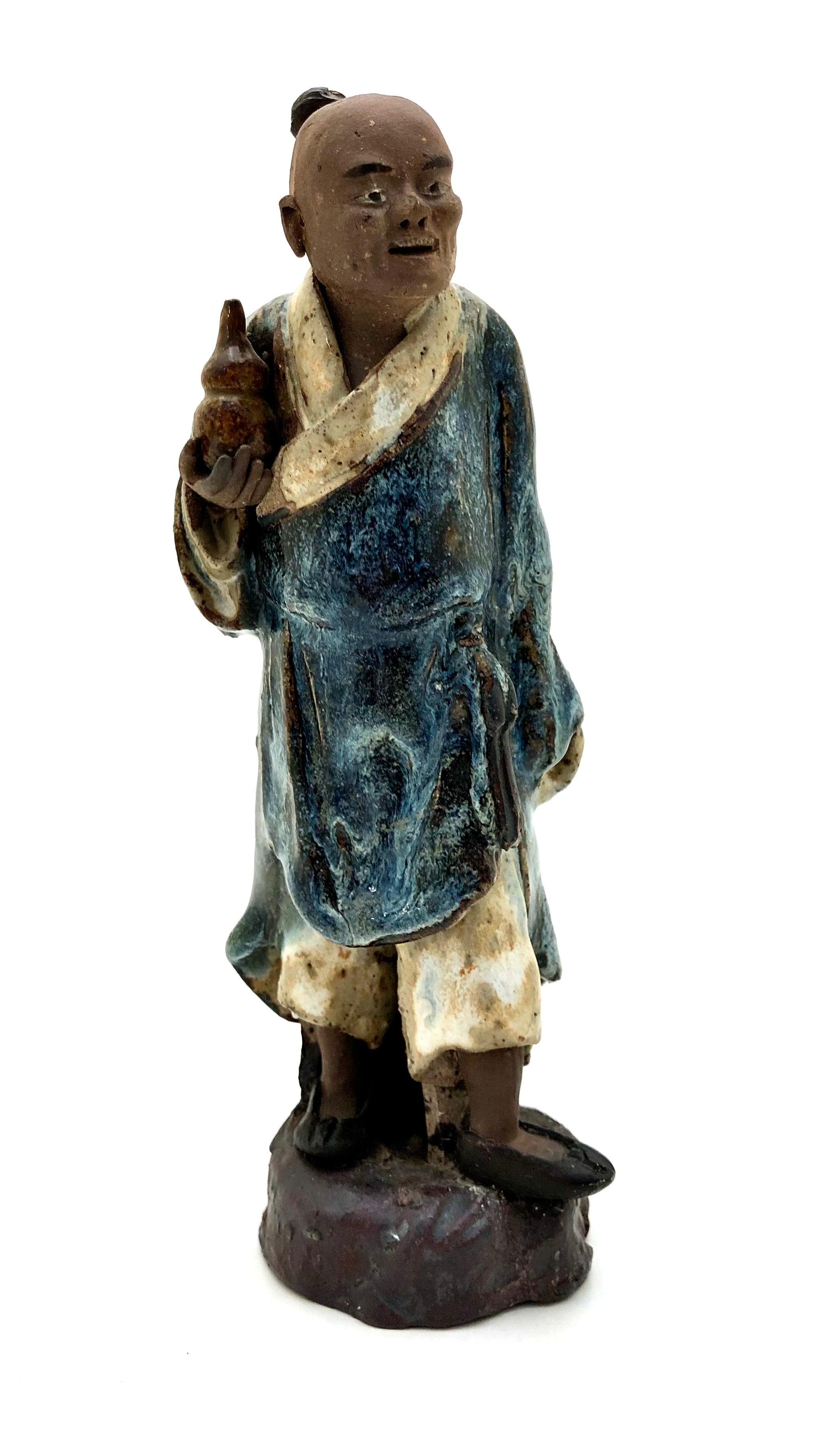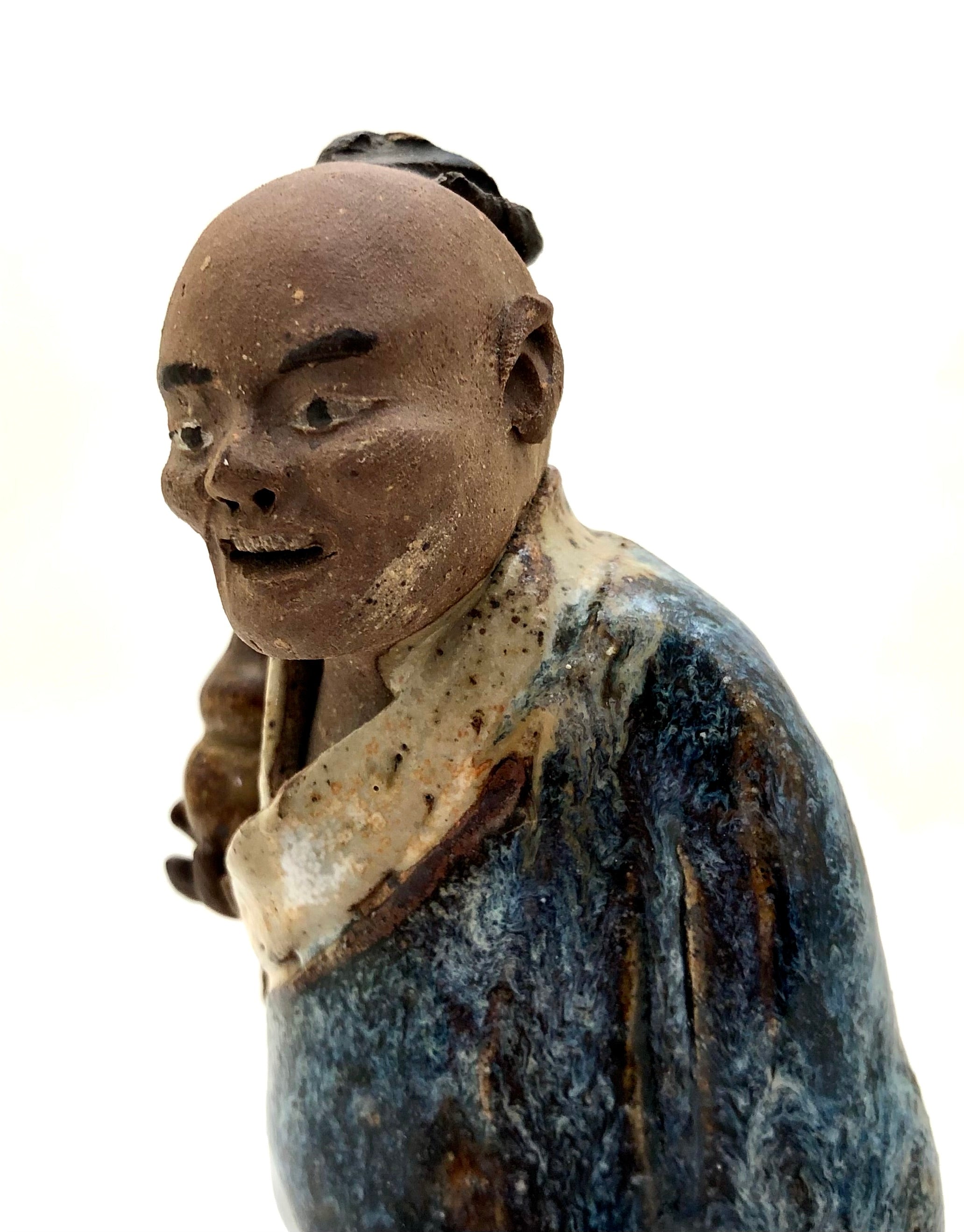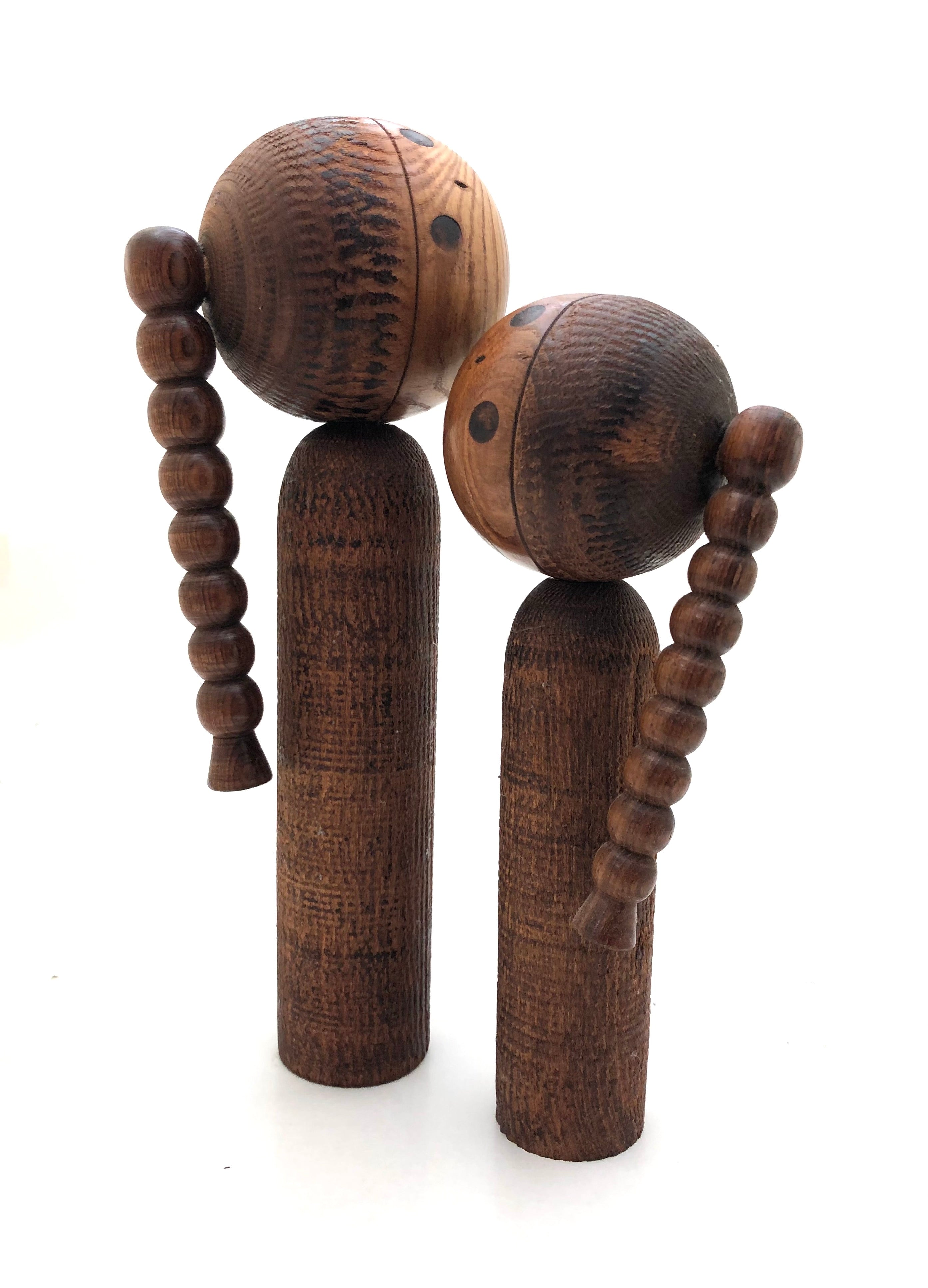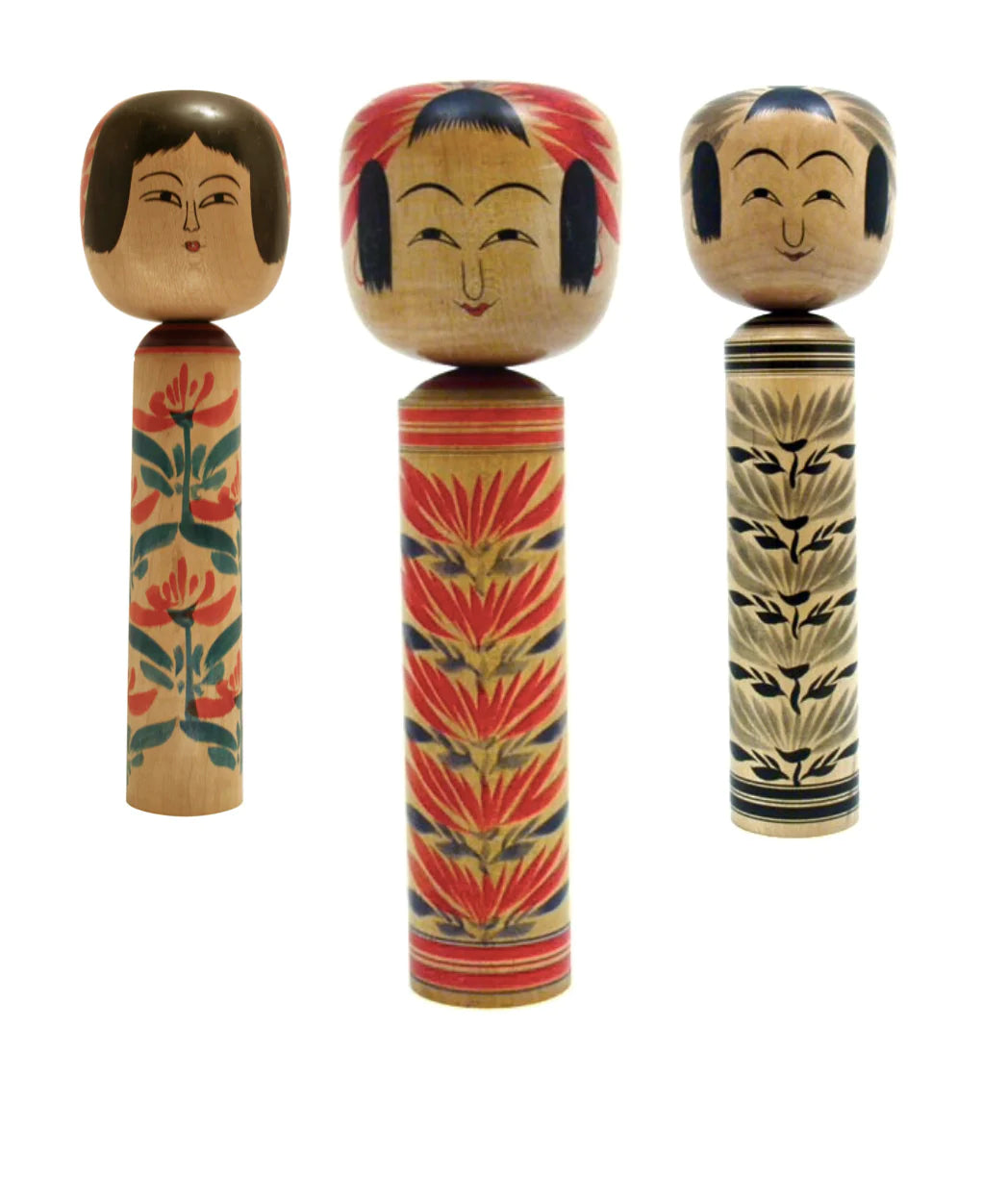





Antique Chinese Republic Shiwan (Shekwan) Pottery | Li Tie Guai with Gourd | Qing Dynasty
All our items ship free in the US
Dimensions: 3-1/4” w x 9-1/4”h
This figure represents a legendary Chinese mythological character, known as a member of the eight immortals. He is benevolent to the poor, sick, and needy, whose suffering he eliminated with special medicine from his gourd. According to legend, one day he told his follower that his spirit was going to travel far away, and to watch his body for seven days while he was gone. It was a big shock when the tired spirit returned home from his trip to find no place to go because his body had been cremated. Thus he became a beggar. Though all the other immortals are handsome, young, noble, and wise, Li TIE GUAI remains the most favored of the immortals.
This version of Li tie Guin shows him walking while carrying his brown glazed medicine gourd in a raised arm. His robe is exceptionally mottled in a blue “feather” glaze, with a white collar and trousers. The details of his unglazed face are exceptional, with white eyes, detailed ears, and he exhibits a shaved forehead and queue, (hairpiece up in a bud). His face, hand, and legs are unglazed, and he is wearing traditional unornamented slippers. This piece has no incised mark or signature on the bottom and we were told it was a non-export piece. This piece was purchased in a small town located in Guangdong province, China in 1985 from a scholar who specialized in the history and folklore embodied in Shiwan ware.
Antique Condition: This is an exceptionally glazed figure in excellent condition: no chips or missing elements or repairs. “As is” and retains the original craft/workmanship. Any discoloration, chipping/cracking, surface wear, or structural damage noted.
NOTE: Overview and Characteristics of Shiwan Art Pottery
As an important part of Chinese traditional culture, ceramic wares have a long history reflecting the customs of this ancient culture. One of the most famous types of ceramic works is called Shiwan (Shekwan) ware, which has been the shining star in Chinese folk ceramic art as early as the Tang and Song Dynasties (618-906AD), and which flourished in the Ming and Qing dynasties.
Chinese Classical Shiwan ware is a type of traditional pottery that comes from the talented artists of a small town located in the south of China called Shiwan, in Foshan City, famous for its culture and pottery. Here craftsmen are well-known for their glazing techniques and unique forms. All the sculptural work is hand-formed, and sometimes involves numerous family members within a village, while directed by a master craftsman, every object is unique, and therefore, a limited edition, which attracts art collectors the world over. The three largest collections of Shiwan Art Pottery are housed in the Hong Kong Fung Ping Shan Museum, and the Chinese Cultural Centre in San Francisco.
Original Shiwan figurines, (1880-1940), are extremely rare because of the art/craftsmanship and their delicate, fragile nature. The greater the detailing, the more likely the figure has been made by a master artist, hence the higher value. Also the larger the piece the more valuable, (8-0” or pieces over 20.0” tall) are extremely rare. The age of Shiwan ware can be verified by the markings, or lack of markings, the fact that they are hand-formed, depicting highly expressive figural forms and vivid imagery; primitive in sculpting techniques; the decorative elements associated with the figure; the deep rich glazes infused with the piece; the type of regional clay (sandy, coarse clay is the oldest), and the stylistic differences.
Travelers or missionaries to the orient would purchase the mud figures at local markets and carry them home. These were not stamped, because they were not for importation. Also, you may find some pieces signed by the artist.
DO NOT CONFUSE MUDMEN / MUD FIGURES WITH SHIWAN WARE! This unique artistic style made Shiwan ceramics extraordinarily splendid, (not to be confused with the export mud men, which were smaller figures made of mud-like clay forced into a mold and/or finger-formed, and used as decorative additions to in bonsai, planters, and aquariums). These lack the expression, detail, and individuality of their glazed handmade counterparts).
Return Policy
Our antique/vintage pieces are identified/described and professionally photographed, and considered, “as is”, therefore all sales are final. Read our full refund and return policy.



